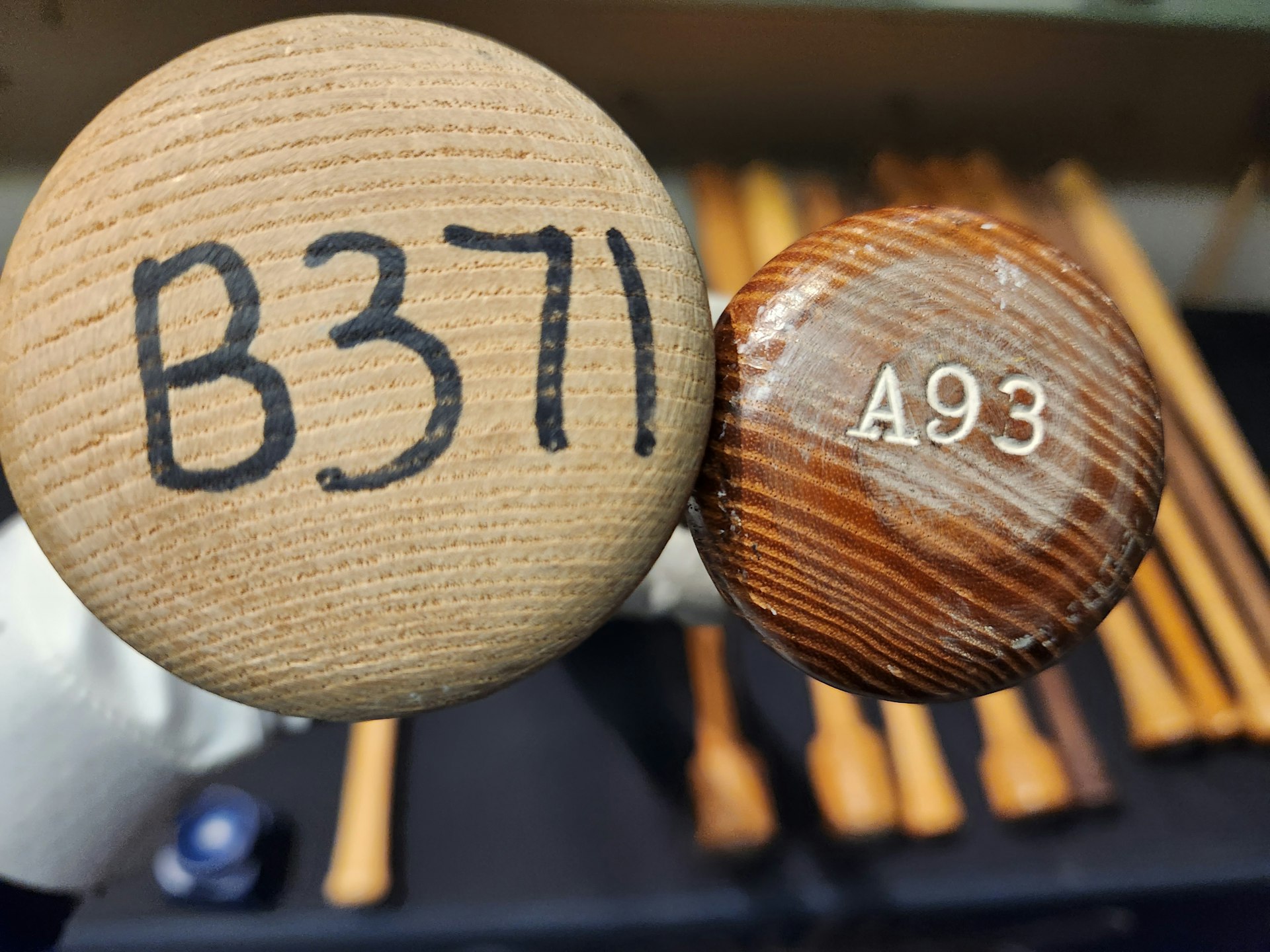Bat Tails: Knobs Were a Minor Phenomenon in 2022
By John Hughes
2022 was a knobby season for Major League Baseball.
Normally an afterthought in the eyes of casual fans, the bat knob this past season was a focus of strategy for more than, well, a handful of players.
The rounded part of the handle onto which the meaty part of the palm finds a stopping point, the knob may seem insignificant, a mere bulge of wood put there as a precaution against bats being slung in places better left unslung to.
The knob is likely to get even more attention now that this year’s Most Valuable Player of the National League earned his trophy using a bat with a tea-cup size knob dubbed the “hockey puck”.
MVP Paul Goldschmidt may have used his best, but plenty players this season were drawn to the bulbous butted bat. Joey Votto, Nolen Arenado, Patrick Wisdom, Francisco Lindor and others regularly or situationally used the “hockey puck” at least part of the year. This season, Goldschmidt pucked up personal record hitting numbers in many categories of his 12-year career.
Was it the knob, or the hands that held it, that put up Goldschmidt’s numbers?
The puck gained attention in the 2021 season when Joc Pederson and Joey Gallo made news using the unusual design. About mid-season this year, the Louisville Slugger factory turned out several experimental knobbed models for minor leaguer Anderson Miller and for Cincinnati Reds catcher Tyler Stephenson.
And in the post-season, Henry Davis, Kyle Isbel and Hunter Renfroe are among players who have placed orders for a variety of knobs.
The sudden attention to knobs seems to have grown from, what else, analytics. Players who have their swings measured, dissected, recorded, translated – studied like forensics in a crime scene laboratory – liken their experience to getting fitted for a golf club. Media articles this past season opined that the efficacy of the “hockey puck” lies in how the shape splits the bat weight and creates something of a counterweight under the batter’s bottom hand.
Players who have visited the Slugger factory for fittings say they want to try the fat knob to see if it helps generate bat speed.
Largely seen as a new phenomenon, the shape is old news here at Hillerich & Bradsby Co., and specifically inside the Louisville Slugger Museum Bat Vault. Guests that go on an All-Star Experience can see variations on the “hockey puck” knob theme dating back to at least 1957 when Roy McMillan of the Cincinnati Reds had us make the Mc33 model. (Not for nothing, but that season McMillan hit .272, the highest average of his 13-year career. But: it’s a fair guess that his reasoning wasn't computer generated.)
Look at baseball bats in a sporting goods store and you’ll see a knob is a knob is a knob. True, that, for amateurs.
Pros are a different matter. In fact, the closer you look, the more it seems that no two knobs are the same.
Check out these from the Bat Vault at Louisville Slugger Museum & Factory:

A knob is a knob is a knob? Not for professional ballplayers.

Barry Bonds’ B371. Henry Aaron’s A93. Knobs that combined for 1,517 home runs. Different sized players, different sized knobs. Same result.

Napolean Lajoie made it to the Hall of Fame (1937) using a double-knob, split grip Louisville Slugger.

Ray McMillian ordered the Mc33 Louisville Slugger in 1957 – 65 years before Paul Goldschmidt would become National League MVP with his “hockey puck” knob.

In the 1970s – during the years of hitting guru Charlie Lau – the Kansas City Royals Baseball Academy ordered these double-knobbed models. They are based on popular models such as the M110 (used by Mickey Mantle and others).

Top to bottom: Roberto Clemente used a “cone” knob so that he could drop his pinky finger off the end. Barry Bonds preferred an extreme knob slopping into a tiny handle. In 1956, Eddie Mathews ordered a Slugger that combined both features.
